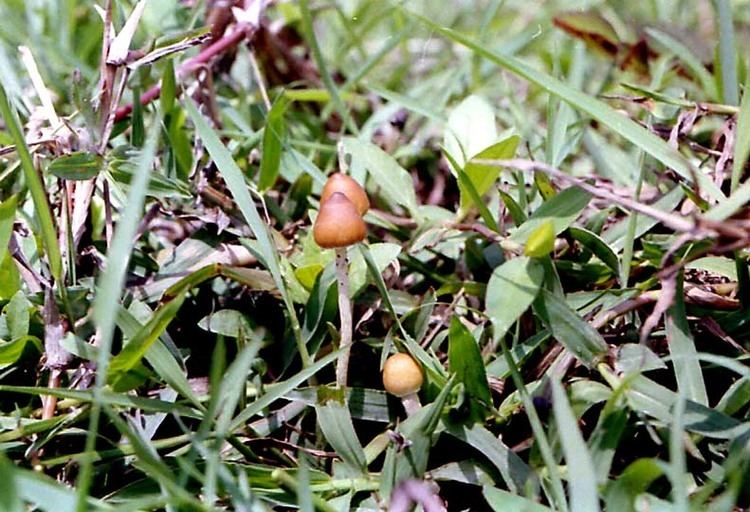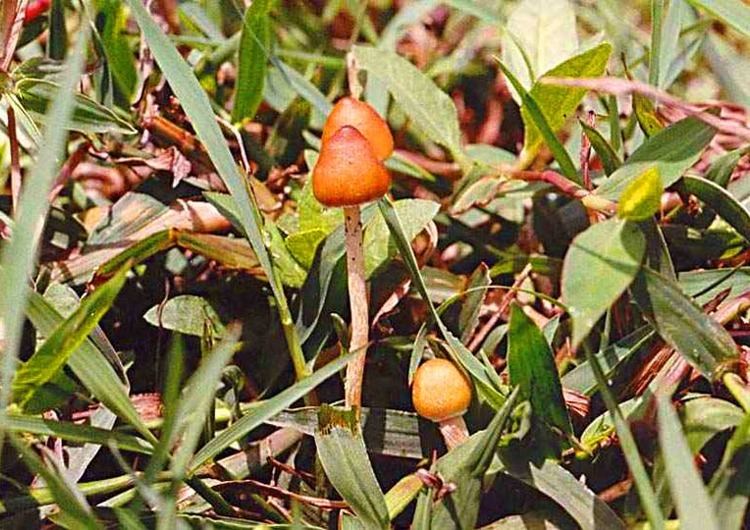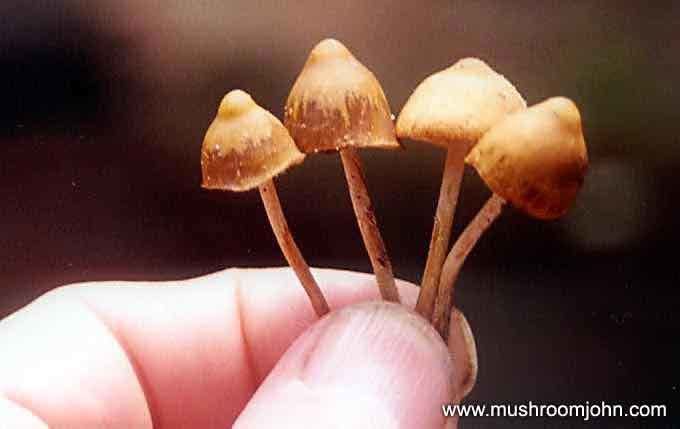Kingdom Fungi Class Agaricomycetes Family Strophariaceae | Division Basidiomycota Order Agaricales Genus Psilocybe Rank Species | |
Similar Psilocybe villarrealiae, Psilocybe aucklandii, Psilocybe graveolens, Psilocybe zapotecorum, Psilocybe liniformans var ameri | ||
Psilocybe samuiensis is a psychedelic mushroom, which has psilocybin and psilocin as main active compounds. It was placed in the Section Mexicanae of genus Psilocybe by Gastón Guzmán due to its rhomboid-shaped spores. It has been found in Koh Samui, a small tropical island in Thailand, where some psychoactive species are consumed by both natives and tourists.
Contents

Description

The cap is typically 7–15 mm in diameter, almost convex to conic in shape, umbonate with a small papilla. The cap is viscid and has a separable pellicle. It is a reddish-brown color when moist, but becomes lighter brown when dry. The stipe is 4.0–6.5 cm high × 1.5 cm thick, equal or slightly bulbous. The stipe is hollow, whitish in color, and covered with white fibrils. It is the same color as the cap, and stains blue when bruised. The odor and taste are slightly like grain meal (farinaceous). Spores have been recorded in the range of 10.4-12.8 by 6.4-8 µm and have a thick wall with a flattened, broad germ pore.
Habitat

Psilocybe samuiensis was first picked in soil containing mixtures of sand and clay west of the village of Ban Hua Thanon, in Koh Samui. Since then it is now known to occur in Ranong Province in Thailand and also at Angkor Wat in Siem Riap, Kampuchea; and verified by Gaston Guzman. It grows scattered to gregarious in rice paddies, fruiting from early July to late August.
Chemistry

Analysed by HPLC and TLC, psilocybin and psilocin in the fruit bodies ranged from 0.023–0.90% (dry weight) and 0.05–0.81%, respectively. Baeocystin was also detected at the concentration of 0.01–0.05%.
